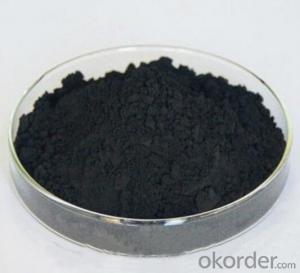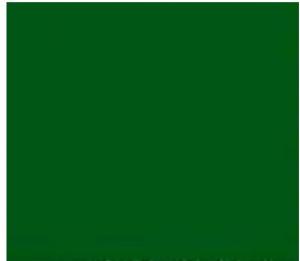Iron-titanium compound powder 303
- Loading Port:
- China Main Port
- Payment Terms:
- TT OR LC
- Min Order Qty:
- -
- Supply Capability:
- -
OKorder Service Pledge
OKorder Financial Service
You Might Also Like
Quick Details
Use: Suitable for aqueous, oily and various types of base materials to produce non-toxic antirust paint, primer and integrated antirust paint. This product can replace red lead, zinc phosphate, tripolyphosphate and other conventional antirust pigments. It can also be used with the above pigments.
Performance
1. 303antirust pigment has outstanding dispersibility, stability and antirust performance. For it is light white (yellowish) powder, it can be produced to the antirust primer in any hue according to the requirements.
2. 303composite antirust pigment, significant cost performance, can greatly reduce the production cost of antirust paint.
3. 303composite antirust pigment does not contain heavy metal and is a completely environmentally friendly non-toxic product. It is easy to use by spraying or brushing and is an ideal new antirust product.
Specifications
Technical index
Item Index Appearance Light white powder Sieve residue (sieve mesh-400)%≤ 1 Density 27℃ g/cm3 3~4 Oil absorption g/100g ≤ 15~30 Water solubles g/100g ≤ 1 Volatile matter (105℃)%≤ 1 Aqueous suspension PH value 7.0~9.5 Phosphorus pentoxide% ≥ 12
Using method: Produce based on conventional antirust paint production process.
Recommended dosage: Recommended dosage is 20%-40%.
Packing: Double-layer plastic packaging, 25kg/bag - 40kg/bag.
Storage: Keep ventilated and dry, it can be stored for a year without deterioration
- Q: Why do algae contain pigments other than just chlorophyll?
- they stay underwater...the water swollows easy in a definite sequence, so the deeper they stay the greater distinctive is the easy and that they elect different pigments than landplants.
- Q: Please and thank you, it doesn't say so on the website.
- Mac Pigment Ingredients
- Q: If you could explain it to me I would be very happy!
- Accessory pigments are light-absorbing compounds, found in photosynthetic organisms, that work in conjuction with chlorophyll a. They include other forms of this pigment, such as chlorophyll b in green algal and higher plant antennae, while other algae may contain chlorophyll c or d. In addition, there are many non-chlorophyll accessory pigments, such as carotenoids or phycobiliproteins which also absorb light and transfer that light energy to photosystem chlorophylls. Some of these accessory pigments, particularly the carotenoids, also serve to absorb and dissipate excess light energy, or work as antioxidants.
- Q: What is a pigment and their function in photosynthesis?
- chlorophyl is the pigment i think. it is in the leaves of plants, that is where the photosynthesis takes place.
- Q: what pigment are? give two example
- i need example sentences of pigment.. Thanks.. :)
- Q: I want to find bright colored eye pigments much like macs. However I dont want to spend tons of money. Does anyone know of a place that sells inexpensive eyeshadow pigments?
- There okorder /
- Q: ive been watching a lot of makeup videos on youtube and a lot of the girls use mac pigments. what exactly are they and how are they different from regular eyeshadow? are they easier or more difficult to use?
- Pigment okorder /....
- Q: 1.what is pigment2.what is it for ( whats its purpose?)3.what are other things people do with it
- Pigment is a loose powder that has highly concentrated color. They come in different finishes like matte or shimmery. You can use them as eye shadows and such, which is what most people do with them. They show up better and the metallic ones can be foiled (more vivid color and looks like metal almost) if you use them wet by putting a little bit of mixing medium or eye drops on your brush before dipping it in the pigment and applying it. They can also be used as lip colors by mixing with a clear lipgloss, or eyeliner if you use them wet or mix them with something like MAC's special eyeliner mixing medium. They also make a mascara mixing medium that can be used with pigments. Pigments really are a handy, universal product to have! Keep in mind that some pigments are not safe for use in the eye and/or lip area. If you look at MAC's website where the pigments are, you can check out the specifics about that under View Recommended Use. Also, if you use pigments wet, it's best to get a little bit of it in the jar lid, then dip the brush in it. That way you won't dampen and ruin the pigments in the jar, and moisture in the jar could promote the growth of bacteria.
- Q: I am planning on purchasing MAC, but what r the differences... thanks to all...I want to have an idea before I head to the mall.
- Pigments are really loose eye powders. For MAC, it's kind of like 'balls of sparkles' If you want really sparkly eyes, you'd probably want this. Dip your eye makeup brush in water, then in the pigment. I find this to work well, and it really compliments the product. It's best applied over a dark eyeshadow or primer. An eyeshadow is a packed together powder. (As you probably know) MAC eyeshadow comes on bright and radiant. So if you just want a simple look, this product works well. I suggest MAC - PaintPot. It's a creamy eyeshadow that is easy to blend. It's not waterproof, but it's difficult to rub off. It can act as a primer too.
Send your message to us
Iron-titanium compound powder 303
- Loading Port:
- China Main Port
- Payment Terms:
- TT OR LC
- Min Order Qty:
- -
- Supply Capability:
- -
OKorder Service Pledge
OKorder Financial Service
Similar products
Hot products
Hot Searches
Related keywords




















